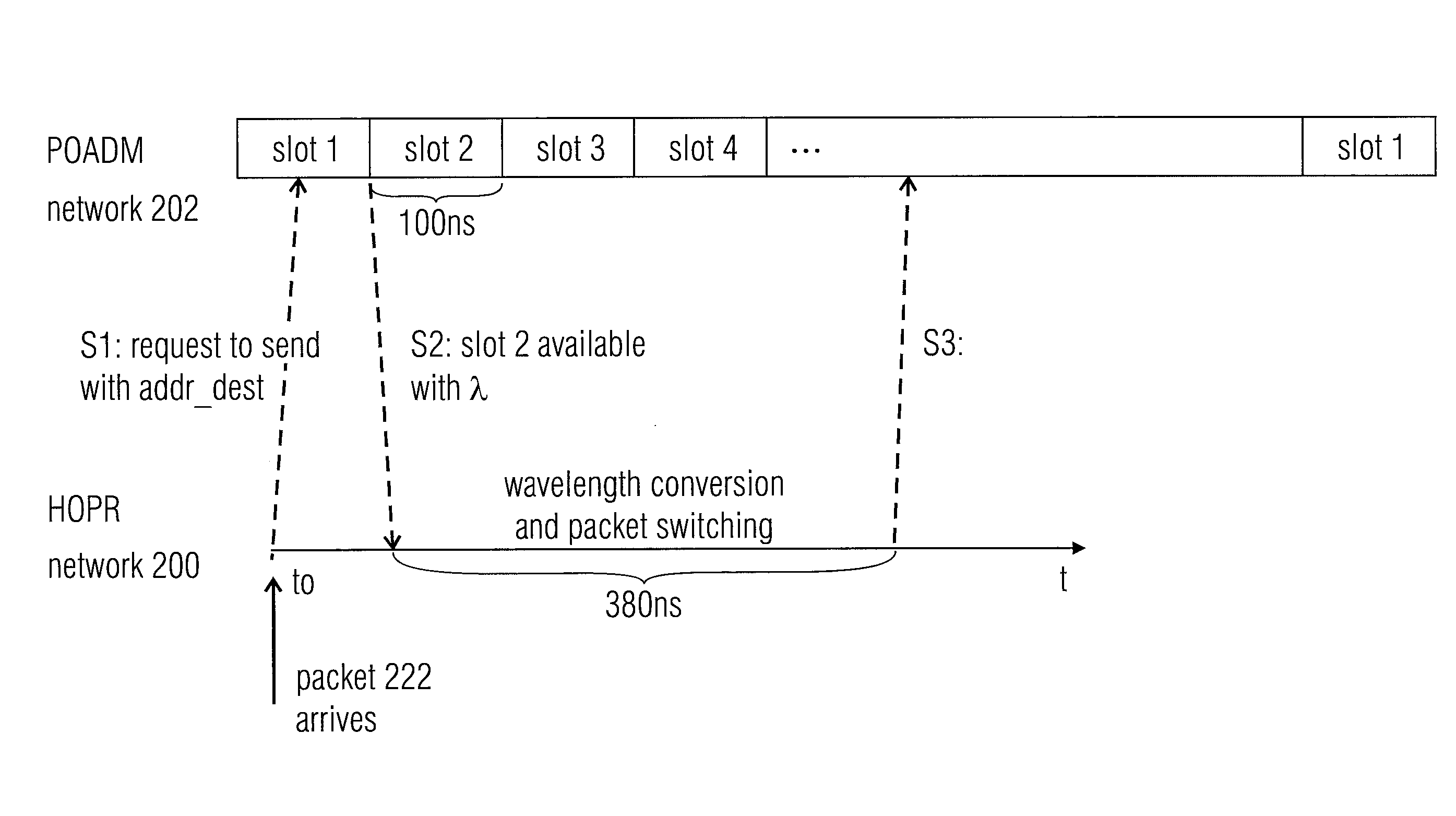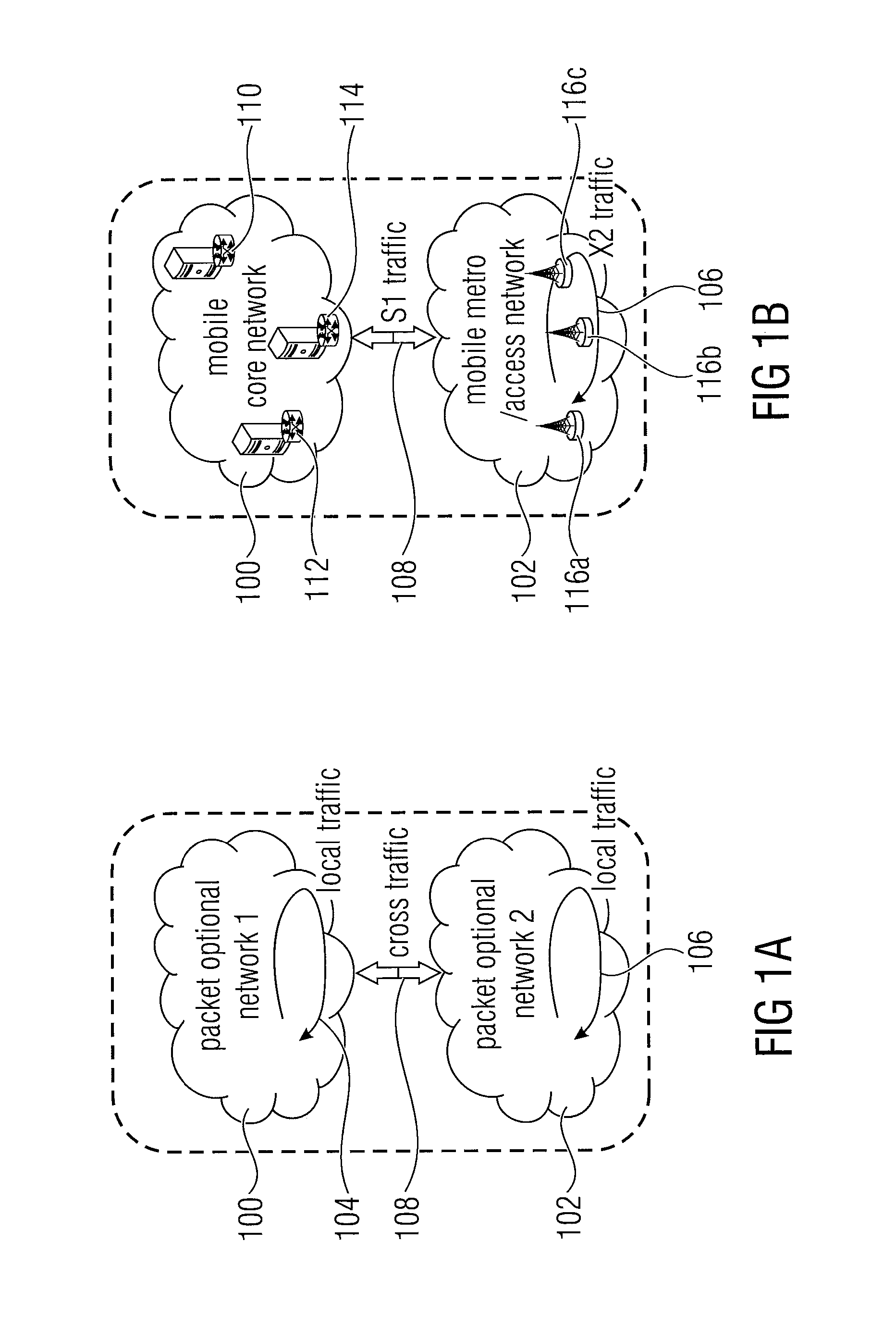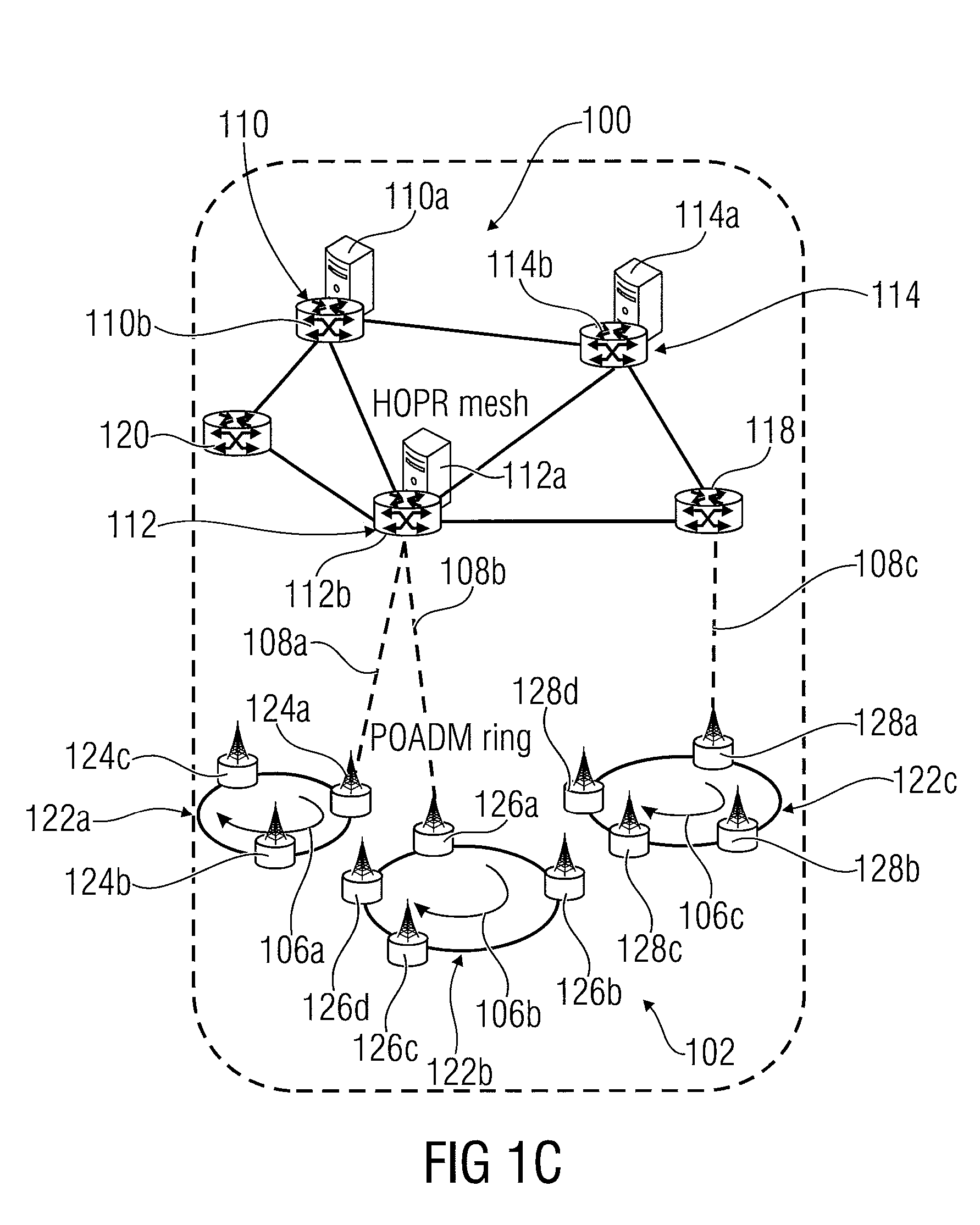Method and system for providing an external optical data packet to a destination node of a packet optical network
data packet technology, applied in the field of providing an external optical data packet to a destination node of a packet optical network, can solve the problems of high energy consumption, no solution to efficiently interconnect different packet optical networks, and points also form bottlenecks, so as to improve the interconnection of different data optical networks, reduce energy consumption and latency of packet switching, and improve the effect of interconnection
- Summary
- Abstract
- Description
- Claims
- Application Information
AI Technical Summary
Benefits of technology
Problems solved by technology
Method used
Image
Examples
Embodiment Construction
[0033]In the following, embodiments of the present invention for implementing an optical bypass for passing an optical packet optically from an external node, for example a node of a first optical network, to a receiving packet optical network will be described. So far, conventional approaches necessitate the conversion of the optical packet into the electrical domain, processing it and converting it back to the optical domain. To avoid such problems, in accordance with this invention, an optical bypass is provided as mentioned above, however, there are several challenges to realizing such a bypass:
[0034]1. Conversion in the control plane: the two interconnected packet optical networks may have different control mechanisms, for example there may be different addressing schemes, different ways of treating QoS, etc. Further, one of the packet optical networks may have an in-band control channel, while the other one may have a dedicated control channel.
[0035]2. Conversion in the user p...
PUM
 Login to View More
Login to View More Abstract
Description
Claims
Application Information
 Login to View More
Login to View More - R&D
- Intellectual Property
- Life Sciences
- Materials
- Tech Scout
- Unparalleled Data Quality
- Higher Quality Content
- 60% Fewer Hallucinations
Browse by: Latest US Patents, China's latest patents, Technical Efficacy Thesaurus, Application Domain, Technology Topic, Popular Technical Reports.
© 2025 PatSnap. All rights reserved.Legal|Privacy policy|Modern Slavery Act Transparency Statement|Sitemap|About US| Contact US: help@patsnap.com



